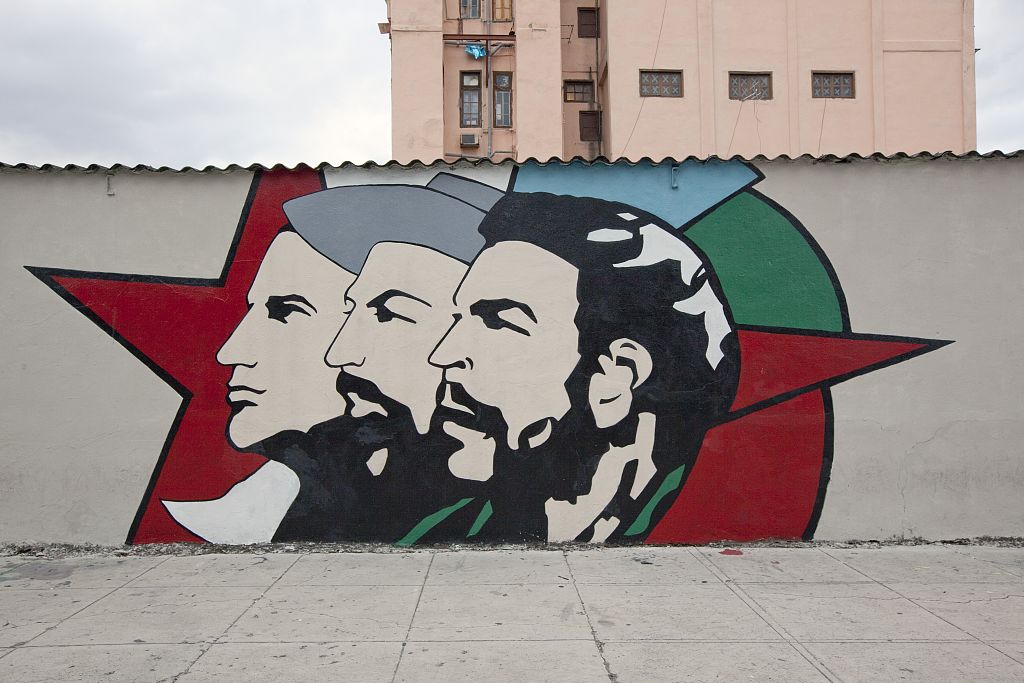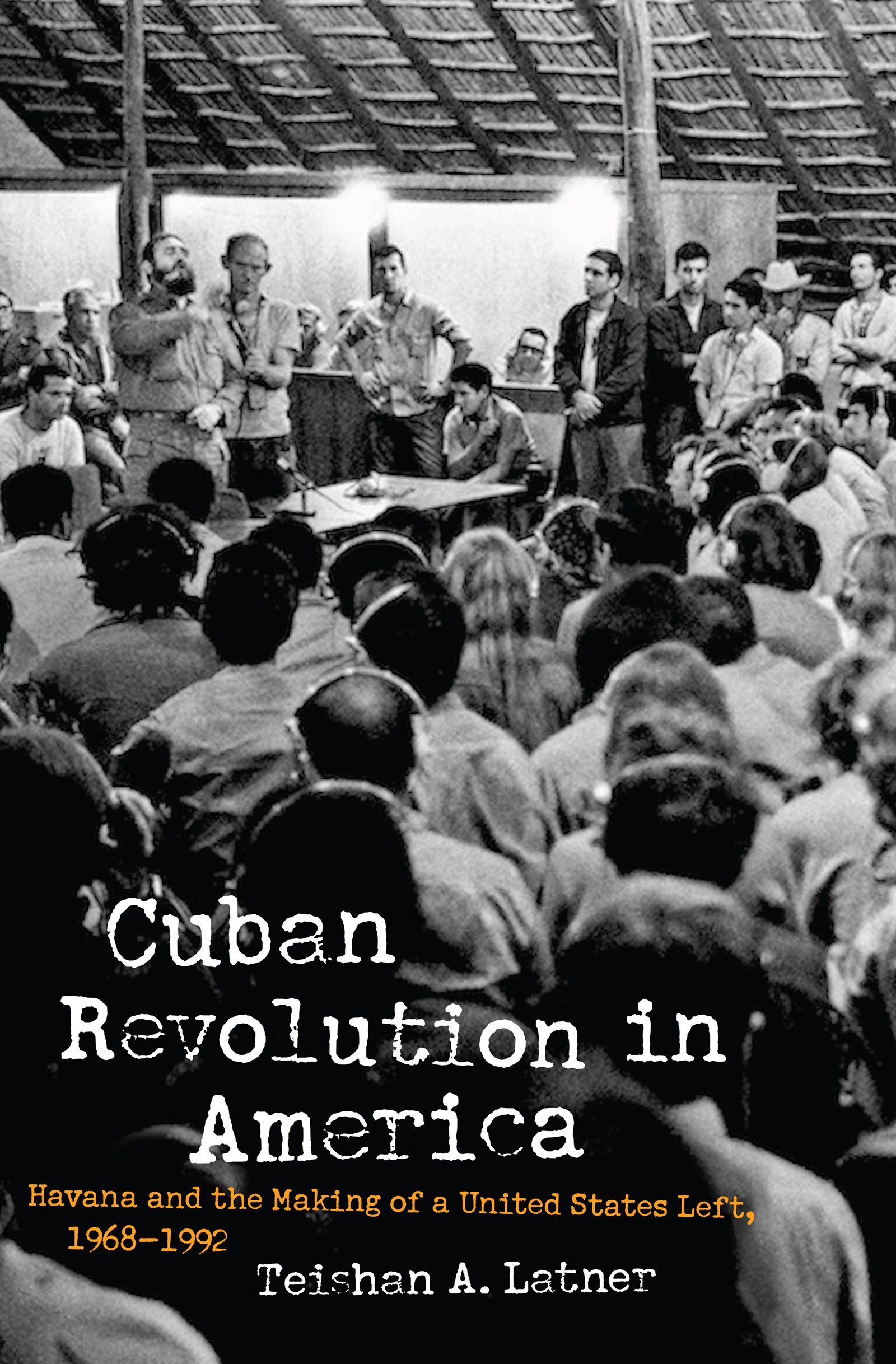Cuba and the Making of a United States Left

As revolutions go, the Cuban Revolution had it all: handsome masculine icons toppling a ruthless U.S.-backed dictator against dramatic backdrops of mountains and ocean. Truly an authentic, young David, up against the colossus of Goliath. There is a reason that Cuba has attracted the attention and, often, admiration of people around the world, including the United States. However, the story of American interest in the Cuban revolutionary project is complicated. How can Goliath support David?
Writing on United States/Cuban relations could fill a library, yet Teishan Latner’s book Cuban Revolution in America: Havana and the Making of a United States Left, 1968-1992 explores new topics and innovative sources. Latner begins his study on the premise that the Cuban revolution was the “most consistent foreign influence on left wing radicalism in the U.S.,” and goes on to illustrate how this was so (p. 6). Some of this is well-trod territory. For example, many interested in either Cuba and/or the history of U.S. radicalism will be familiar with the story of the Venceremos Brigades, the volunteers who came to Cuba to cut sugar cane in the 1970s. These brigadistas who left the U.S. “radical Peace Corps” was always high on symbolism—Fidel Castro spent Christmas Day 1969 cutting cane with them. Less well known is how some U.S. authorities came to view young American supporters of Cuba as “missiles in human form,” and unleashed a veritable McCarthy-esqe storm of paranoia and surveillance against them once they returned. Latner’s analysis of what he calls the “incarcerated archives” of FBI files is a sophisticated and new contribution to not only Cuban-U.S. relations but also the history of radicalism in the U.S. in general. Other original and highly readable chapters in this book include the experiences of those who hijacked planes from the U.S. to Cuba, the experiences of second generation of Cuban Americans who moved and returned to the Island with the lesser known Antonio Maceo Brigade, and a truly fascinating exploration of Americans who found political refuge in Cuba, such as Eldridge Cleaver and Assata Shakur. This is the rare study of Cuban-U.S. relations that tries to merge people-to-people relations with the world of formal diplomatic ties, covering a relatively long period from 1968-1992.
One of Latner’s central arguments is how racial and ethnic identity shape leftist perceptions of Cuba. African Americans, he claims, were the political bloc that “provided the Cuban Revolution with its most consistent base of U.S. support” (p. 22). Latner is consistently aware of how the “Third World” imaginary shaped the U.S. left, as young Americans, those complicated children of imperial Goliath, struggled to find their voice as international political actors. It is certainly true that African Americans turn up in large numbers in the stories of hijackers and other political refugees. Recently and most famously, Assata Shakur termed Cuba “one of the largest, most consistent and most courageous palenques that ever existed” (p. 202). In his studio album Element, even Kendrik Lamar fantasizes that he might “Fake my death, go to Cuba that’s the only option,” referencing a popular legend that Tupac himself is alive and walking the streets of Havana. Latner is a good researcher and he is obviously aware that African Americans did not speak with one voice about Cuba. Eldridge Cleaver’s negative views on Cuba and the left in general became well known, and William Brett, a Black Panther hijacker who lived out his days in Havana, expressed ambivalent and complicated opinions about the place particularly in his older years.
Racialization and race politics in Cuba have always been complicated. Cuban scholars such as Victor Fowler and Esteban Morales (not cited in the book) and recently U.S. scholar Devyn Spence Benson (who is cited) are just a few writers who have attempted to explain, with sophistication and nuance, the particularities of Cuban racism. Racism in Cuba is different in many respects from that of the U.S. This book highlights the centrality of Cuba for U.S. black radicalism and offers a wealth of quite fascinating details about this relationship, yet it is far stronger on the U.S. side of the story. For example, Latner did not fully explain how Cuba could shelter Assata Shakur and William Brett while authorities have prohibited autonomous black organizing for years and Havana police actively and constantly scrutinize the street lives of Afro Cubans.
A few years ago, I heard Henry Louis Gates speak in Havana at a book launch. It was just after the joint announcement by Barack Obama and Raul Castro that they would try to behave normally towards each other, and Gates was extremely excited by the news. “It’s so great we are going to have renewed relations with Cuba, because there is no racism here,” he enthused. I felt the room, filled with Afro Cubans including many high profile intellectuals and artists, collectively gasp. Gates sensed the tension and backtracked: “Well I mean there isn’t segregation here, people don’t live or work separately.” And this is substantially correct, at least relatively speaking. However, that moment stayed with me as an emblematic example of how easy it is for foreigners to misjudge or misinterpret the race politics of another place. Latner captures many of these contractions in this readable book, but this transnational study is far more illuminating about one part of the story.
Transnational often substitutes for bi-national, and this is truly the case here. Latner acknowledges that Cuba in the 1960s and 1970s especially was a meeting ground for Third World revolutionaries, intellectuals, and artists and recounts the importance of encounters with Vietnamese people, for example, for young U.S. radicals in Havana. However, Latner does not examine European or Canadian ties with Cuba. If he had, he might have learned that there was a steady stream of Cuban writing that circulated through Canada to the U.S., for example, uniting Canadian and U.S. leftists in the project of Cuban solidarity. He might also have learned of the outcry that took place in Canada, which acted as a launching pad for various U.S. brigades. Cuba may well have been a central reference point for the making of the U.S. left, but aside from cane-cutting photo ops with Fidel, how important was the U.S. left to Cuba? This is a question that bears exploration in a truly transnational fashion by considering the first world left in general and its multifaceted relationship with the Cuban revolution.
And about those brigadistas who left the U.S. for Cuba via Canada: Lardner mistakenly states they boarded boats in “St Johns Ontario.” St. John’s is a port city in Newfoundland. Saint John is a port city in New Brunswick (which is where they actually departed from). Ontario is a province in Central Canada, on neither coast. This error is repeated five times in this book. The problem goes beyond the author; was there no one in the writing, reviewing, editing or production process of this book who knows basic Canadian geography?
Global interest in Cuba is unlikely to wane, perhaps particularly so in the U.S. as Donald Trump’s regime scrambles to undo the tentative “normalizations” of the Barack Obama/Raul Castro era (which seems like long ago now). Cuba is once again becoming forbidden fruit for U.S. travelers, educators, students and business people. Latner’s book offers a worthy reminder that the place has long been simultaneously a lightening rod for U.S. anxieties and an inspiration magnet for those seeking social justice.
Copyright © AAIHS. May not be reprinted without permission.
